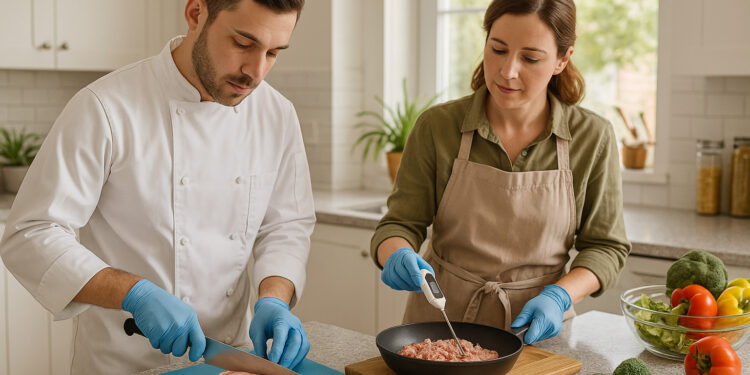Whether you’re a professional chef or a home cook, food safety is the cornerstone of great cooking. Beyond taste and presentation, safe food handling prevents contamination and keeps everyone healthy. By understanding and applying proper food safety techniques, you can maintain quality, reduce risk, and ensure every meal is both delicious and safe to enjoy.
The Importance of Food Safety
Foodborne illnesses can occur anywhere—from a five-star kitchen to a family dinner table. Bacteria such as Salmonella, E. coli, and Listeria can thrive when food is improperly stored, cooked, or handled. For chefs, following strict safety protocols protects guests and reputations; for home cooks, it protects loved ones. Clean habits and mindful preparation form the first line of defense against contamination.
Keep It Clean: Hygiene Comes First
The simplest yet most powerful food safety rule is cleanliness. Wash hands thoroughly with soap and warm water before and after handling food—especially raw meat, poultry, or seafood. Clean all surfaces, utensils, and cutting boards with hot, soapy water after each use. In professional kitchens, sanitizing stations and disposable gloves are essential. At home, a designated cleaning area and separate cloths for dishes and counters help prevent cross-contamination.
Prevent Cross-Contamination
Always use separate cutting boards for raw meats and ready-to-eat foods like fruits and vegetables. Store raw ingredients on the bottom shelf of the refrigerator so their juices don’t drip onto other items. Use clean utensils for tasting, and never place cooked food back on a plate that held raw meat. Simple precautions like these can make a major difference in preventing bacterial spread.
Cook and Store Safely
Temperature control is critical in food safety. Use a food thermometer to ensure meats reach safe internal temperatures—like 165°F (74°C) for poultry and 145°F (63°C) for fish. Hot food should be kept above 140°F (60°C), while cold food should stay below 40°F (4°C). Leftovers should be refrigerated within two hours of cooking and consumed within three to four days. Proper labeling and storage help both chefs and home cooks track freshness.
Mindful Sourcing and Handling
Safe cooking begins with quality ingredients. Purchase from trusted suppliers and check expiration dates before buying. Wash produce under running water, even if it will be peeled. In restaurants, verifying supplier certifications ensures that food safety standards are met from farm to plate. Home cooks can adopt similar diligence by shopping at reputable markets and avoiding damaged packaging.
Conclusion
Food safety is about respect—for your ingredients, your guests, and yourself. Cleanliness, proper storage, and mindful preparation protect health and elevate the art of cooking. Whether at home or in a professional kitchen, safe practices ensure that every dish served brings not only satisfaction but peace of mind.












